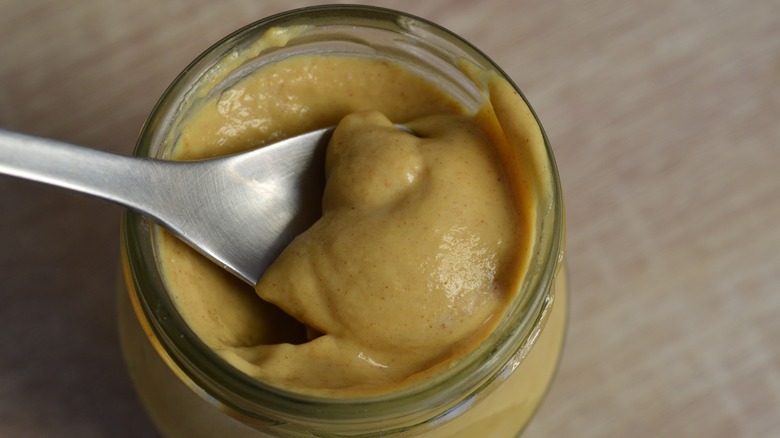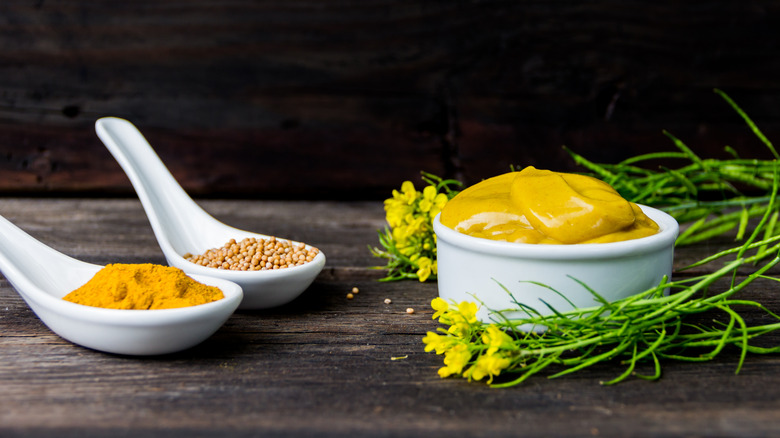Here's How Long Mustard Will Last Once Opened
It's happened to everyone, the question that inevitably results from looking at an old condiment in the fridge and wondering if it's safe to eat. While it may be easy to tell when some food is spoiled, with many condiments it's safer to know the expiration date than rely on instinct alone. This includes mustard, the popular yellow condiment eaten by vegans and carnivores alike. It is crucial to know when that jar of mustard goes bad to maximize the use of that pantry essential, whether adding it to a hot dog or including it in a baked mac and cheese recipe.
The simple answer is that mustard lasts for about a year (12 months) past its printed date in the fridge after opening. However, expiration periods can vary given that there are ways to make food last longer, such as storage methods. Additionally, while one year is the average, different mustard varieties have different shelf lives.
Details regarding the shelf life of mustard
Before opening, mustard can last a few years past its best-by date — between one to two years on average — though mustard packets only last six months. The printed date on mustard is not a warning regarding when it goes bad, but rather an indication of its quality. Before opening, storing mustard in the pantry works fine, but afterward, leaving mustard in the pantry is a mistake both for flavor and shelf life. Instead, be sure to store it in the fridge. After opening, mustard only lasts one to two months in the pantry, instead of the 12 months it lasts in the refrigerator.
Dijon, whole grain, and honey mustard, however, last for longer than their classic yellow American and Chinese mustard counterparts. All of the former last between two and three years beyond the best-before date, while the latter only last for one to two years in the fridge once opened.
Mustard powder, however, lasts longer than its saucy counterparts. Not only can it be stored at room temperature unlike the others, but it also lasts between three and four years. While it doesn't spoil, it will lose much of its flavor after an extended period. If making homemade mustard, keep in mind that the storage time can vary wildly depending on what ingredients you use, lasting only a day at room temperature and between a week and a whole year in the fridge.
Why mustard goes bad and how to tell
Before opening, keeping mustard in a cool, dry place like the pantry without temperature swings will limit condensation, which can cause the container to develop bacteria growth. Keep in mind that water evaporates faster on glass, meaning mustard stored in a glass jar tends to last longer in the pantry than in a plastic bottle.
Since homemade mustard is already exposed to air when created, it should be put in the fridge immediately. Once the seal is broken, storing mustard in the fridge slows bacteria from growing. Low pH levels also stifle bacteria growth, which is why dijon mustard, due to its vinegar base, lasts longer than most mustard types. Honey mustard, in addition to vinegar, contains honey, which acts as a natural preservative.
The first sign for determining if mustard has gone bad is if the liquid has visibly separated from the rest of the mustard. After that, the solid component will thicken, darken, and develop an unpleasant odor and taste, and could even foster mold growth. Be sure to store and seal mustard properly to ensure it lasts as long as possible, and keep in mind that mustard only lasts as long as its other components, meaning something like a homemade mustard vinaigrette will only last for about a week.


